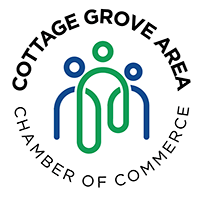Starting a new business can feel like learning a new language. From “equity” to “cash flow,” many of the terms used in day-to-day operations can be confusing at first. Whether you’re opening a café on 80th Street or launching a home-based service, understanding basic business terms helps you make informed decisions and communicate confidently with partners, lenders, and customers.
TL;DR
This guide decodes essential business vocabulary for new and aspiring entrepreneurs in Cottage Grove. You’ll learn:
-
What key terms like revenue, margin, and liability mean
-
How to track performance using simple financial metrics
-
The difference between business structures
-
Where to find reliable resources for deeper learning
Reference Table — Common Business Terms
|
Term |
What It Means |
Why It Matters |
|
Revenue |
Total money earned from sales before expenses |
Measures business activity and growth |
|
Profit |
What’s left after subtracting expenses from revenue |
Indicates financial health |
|
Equity |
Ownership value in the business |
Impacts control and investment |
|
Liabilities |
What your business owes (loans, bills) |
Shows financial obligations |
|
Cash Flow |
Movement of money in and out of your business |
Keeps operations running smoothly |
|
Break-Even Point |
Sales needed to cover all costs |
Helps plan pricing and goals |
|
ROI (Return on Investment) |
Profit gained compared to the cost of investment |
Guides decision-making |
|
Marketing Funnel |
Stages customers go through before purchasing |
Helps plan outreach |
|
Target Market |
Specific group of customers you serve |
Focuses your efforts |
|
Gross Margin |
Profit after subtracting the cost of goods sold |
Key for pricing strategy |
How-To: Build Your Small-Business Vocabulary
-
Start with your accountant. Ask them to explain your financial statements line by line.
-
Read your contracts carefully. Highlight any term you don’t understand — look them up or ask a mentor.
-
Use a glossary for plain-English definitions.
-
Listen to local experts. The Minnesota Department of Employment and Economic Development hosts webinars that break down business planning terms.
-
Bookmark reliable sites.
-
Create your own cheat sheet. Note any term that applies to your industry (e.g., “inventory turnover” for retail, “utilization rate” for service work).
Essential Section: Understanding Letters of Intent
Before signing contracts or closing deals, many local entrepreneurs use a letter of intent (LOI). This document outlines the initial understanding between parties before a formal agreement is finalized. In business, an LOI can be used to announce new partnerships or potential transactions, offering clarity without locking in full obligations.
To learn how to write one and see templates, visit this guide for more information.
Checklist: Launching With Financial Clarity
?
Resource Spotlight — Small Business Administration (SBA)
The U.S. Small Business Administration offers mentorship programs, funding options, and free online courses covering budgeting, marketing, and management. The SBA’s “Learning Platform” is a reliable first stop for Minnesota entrepreneurs who prefer self-paced instruction.
FAQ Section
Q: What’s the difference between gross and net income?
A: Gross income is total revenue minus direct costs. Net income is what remains after all expenses, taxes, and interest are subtracted.
Q: How do I know my business is profitable?
A: When your total revenue consistently exceeds all expenses — that’s your net profit. Monitoring profit margins monthly is key.
Q: Why should I care about cash flow if I’m profitable?
A: Because profit is on paper — cash flow is reality. You can be profitable and still run out of money if income and payments are poorly timed.
Q: Do I need a business plan?
A: Absolutely. Even a simple one-page plan from SCORE’s free template library keeps your goals focused.
Product Highlight — HubSpot Academy
If you’re curious about customer relationship management, HubSpot Academy offers free online courses on sales funnels, marketing automation, and small-business growth — ideal for learning how to attract and retain clients digitally.
Understanding basic business terms helps you make smarter decisions and communicate confidently with banks, partners, and customers. As you grow your business in Cottage Grove, keep learning the language of entrepreneurship — it’s the foundation for sustainable success.


